Climbing a power pole with five sets of jumper leads, a young Mike Corbin tapped into mains power to charge up his electric bike for a Bonneville run. Powered by silver "borrowed" from a US Navy vault, Quicksilver went on to set a land speed record that stood for an amazing 38 years. Here's his story.
Mike Corbin is best known for looking after the fundament of long-range bikers. Corbin seats are the Rolls-Royce of aftermarket motorcycle saddles, and his constantly humming factory in Hollister, California, is a genuinely impressive spectacle producing parts of rare quality. But back in the 70s, Corbin was pioneering electric motorcycling in the United States.
An ex-electrician in the Navy, Corbin rigged himself up a battery powered minibike in the early 70s, and then went on to build an electric streetbike before stamping his name in the pages of history with an electric land speed record that would go on to stand for an astonishing 38 years, even as technology evolved around him. As you might imagine, it was pretty hairy business trying to work with fledgeling electric drive technology back in the 70s – so Mike has a heck of a tale to tell.
"Electric" Terry Hershner and I caught up with Mike at the Corbin factory, where he told us some hair-raising tales about the wild early days of electric motorcycling. We'll let Mike take it from here in his own words.
An electric vehicle pioneer
Yeah, well, we started in the early 70s with the idea that we wanted to make electric powered motorcycles. So we made a street bike, called City Bike, and it had three lead acid cell batteries, and it was 36 volts. It'd go 30/40 – 30 mph (48 km/h) for 40 miles (64 km).
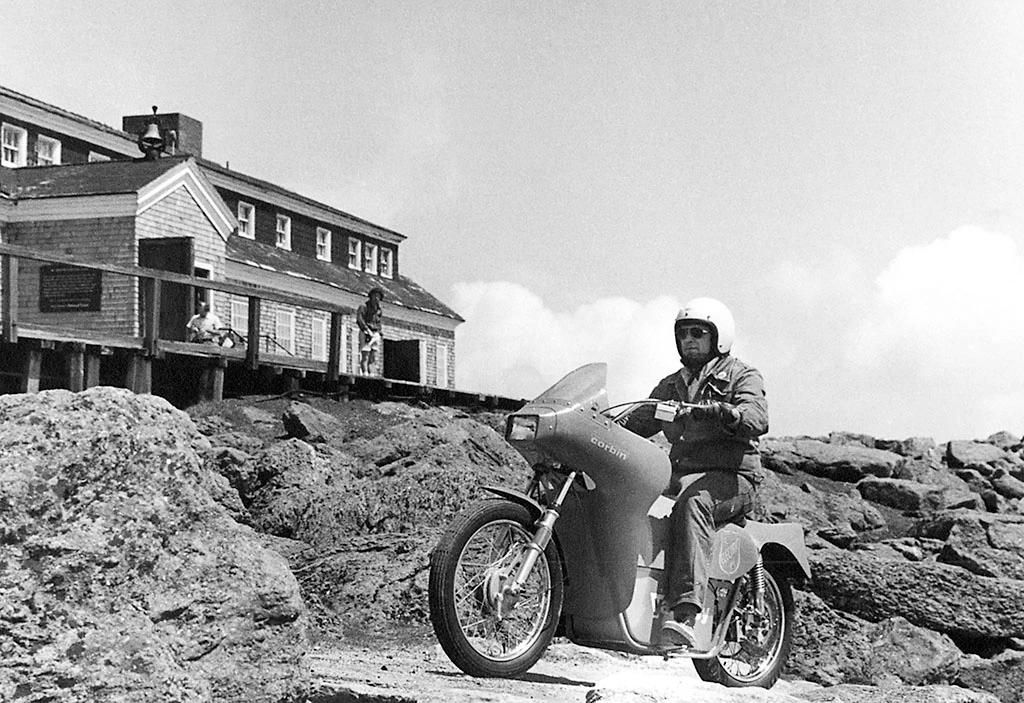
But people said "electric vehicles are too slow" - so we thought, why don't we go to Bonneville, and build an electric bike for that, and show people that electric vehicles can go fast.
So we built the bike, and it ran on lead acid cell batteries, and we went to Bonneville in 1973. We were the first electric motorcycle ever to run at Bonneville. We went 101 mph (163 km/h) round trip average, that made us the fastest guys in the world on electricity.
The following year, we got sponsored by Yardney Electric out in Pawcatuck, Connecticut. They made batteries for nuclear powered submarines and their chemistry was silver/zinc, and that was the highest energy battery you could get in those days, about five times better than the lead acid ones.
So we made a new bike called Quicksilver and used starter motors from A4B fighter planes, because they had lightweight cases – 120 volts DC. We went to Bonneville and we got a land speed record of 165.387 mph (266.164 km/h) round trip average. We had a trap speed one day of 191 mph (307 km/h), and we had another trap speed of 201 mph (323 km/h), but the wire was broken that day. In those days, the timing lights had a wire between them.
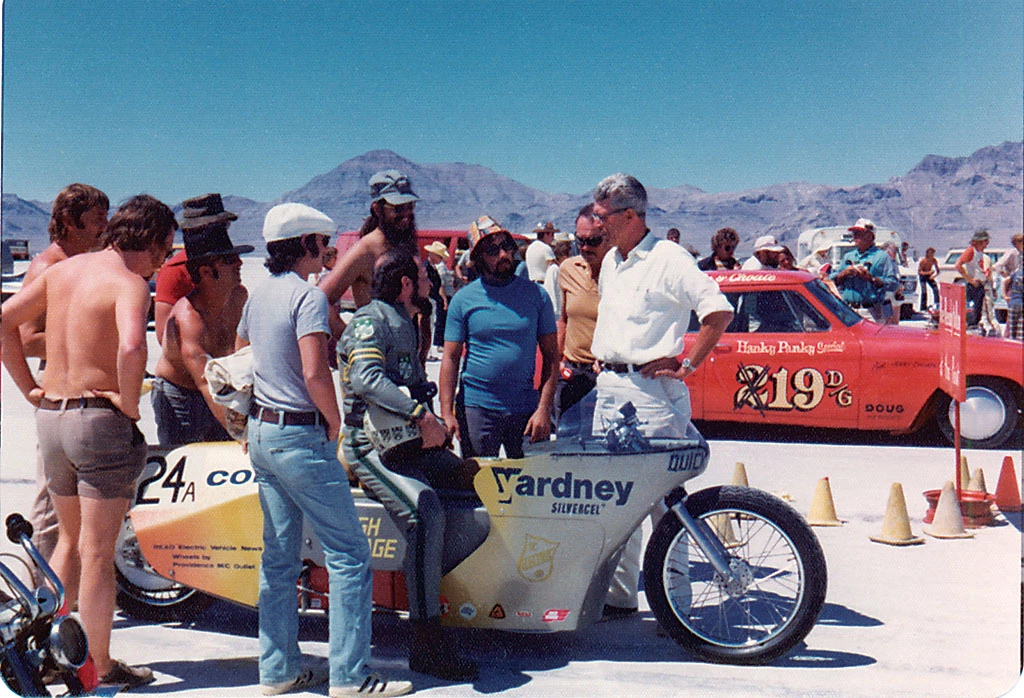
We had that land speed record for a lot of years… 38 years. And then Lightning took a new record in 2012. They call ours a robust record. It was one of the longest standing records ever. And a lot of attempts were made on that record, there must have been 15 motorcycles over the years that would come out and try to take our record. I came out to watch two or three of them. I can look at a bike and tell you how fast it'll go – and they all did everything wrong.
When Lightning came along, they had the battery chemistry down. Plus, what you have now is the AC controllers, those and the AC motors are just unbelievable. You have such amazing equipment now that it's almost unlimited what we're going to be able to do with electric vehicles.
But in those days, it had to be DC if it wasn't gonna have a wire on it. DC electricity itself limits you a great deal. Everything's heavier and high amperage.
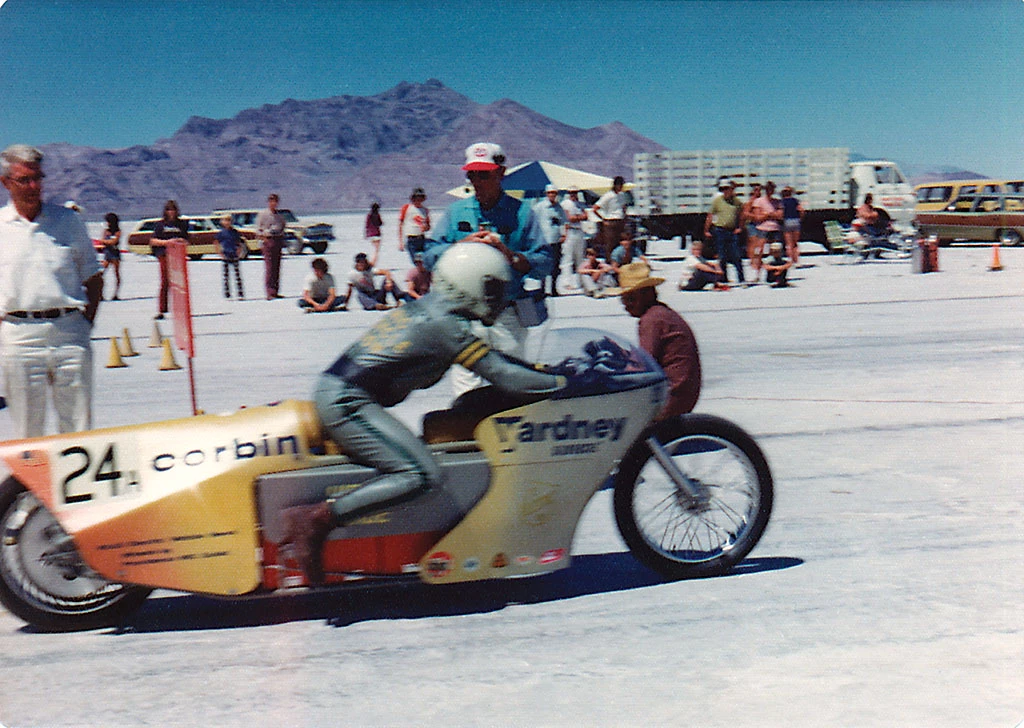
Quicksilver's crazy stepped voltage controller: a throttle that couldn't be shut off
So the A4B DC starter motors… We bought a full pallet of them from the Navy surplus, because they used to burn up. You'd get going like hell, and they'd overheat and solder would come out of the commutators. And these copper bars would fly out into the motor, and you'd have to throw the whole thing away. So I had a bunch of those, I think I've still got some out in my warehouse.
And I had the battery, the battery was good, the only problem was we had to find a way to charge it. The controller was the hard part. We didn't have any way to rheostat that much amperage. So what we did was make a stepped voltage controller with magnetic contactors.
So it'd start at 12 volts, then you'd switch to 24 volts, then you'd go to 120. If you put the 120 volts on immediately, the wheel would just spin and dig a hole right in the salt.
So we had a flying start, we'd tow the bike up to anywhere between 40 and 60 mph (64 and 97 km/h) with a car, then I had an ejection rope, you'd spring load this thing and it'd fall in the salt, and I'd go around the car and start accelerating.
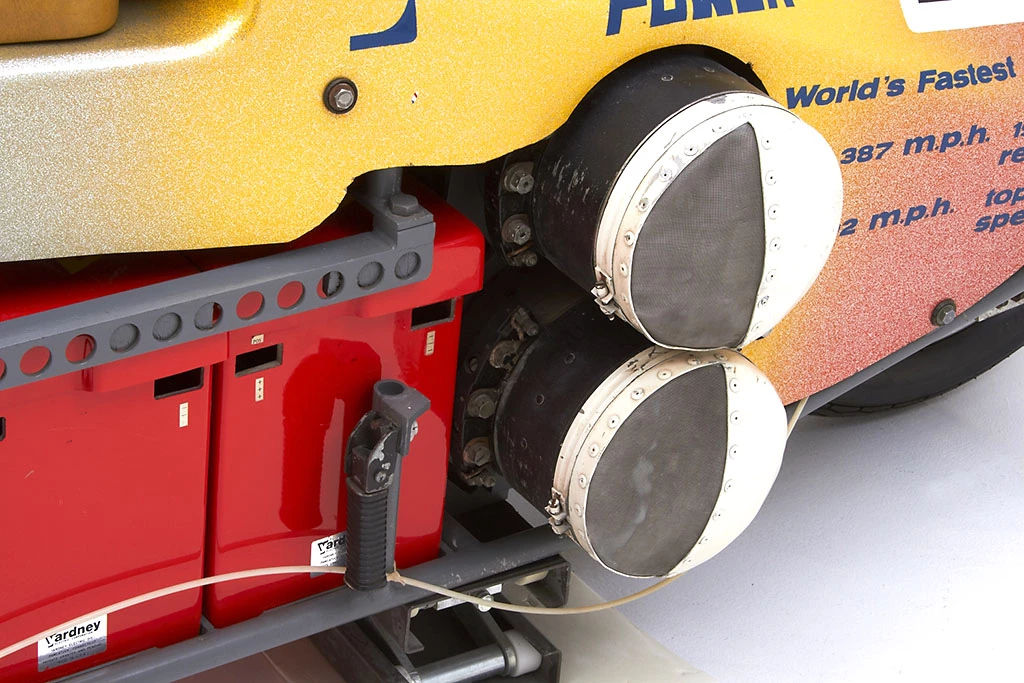
The hard part was, with these magnetic contactors, they'd go in pretty quick, but they open slowly, they open on springs. The problem with the bike was that at 120 volts and 1,200 amps DC, there's no way you can open the contactors. They'd just flash, and you'd have continuity, there'd be plasma, the thing would weld itself together and there'd be no way to shut the bike off. You'd be going to Taiwan. You're going right over the freeway, you're going to hell in a handbasket, that's where you're going.
So I invented this kill switch, which was a big copper knife bar, 2.5 inches wide, 5/16ths of an inch thick, it was just like a knife switch. I had a spring on it and a bungee cord, and a little compression release lever on my right finger that'd open it. Then I put a big fuse in parallel with it so as soon as it broke contact, the fuse blew. It couldn't arc, the current went through the fuse first. And by the time the fuse heated up and blew, it'd be too far away to arc flash. That was my big invention.
The funny thing about it is, they took the bike to the Indian museum in Springfield, Massachusetts. They said "we wanna recover some Corbin stuff and have it in the museum, because you're kinda local in motorcycling." So we had one of our streetbikes in there, and they had Quicksilver in there.
Some guys that worked at the museum there went and stole that knife switch, because it had so much copper in it. It's gone, it's been gone since the 70s. I don't even have any good pictures of it. I remember it was a 300 volt fuse, 450 amps AC.
So some guys would go to the Springfield museum and try to look at the bike to figure out how the heck we did this. They'd go there and the knife switch wasn't there. Neither was the controller, those guys stole the whole controller too. Nobody could ever figure out how the whole system worked.
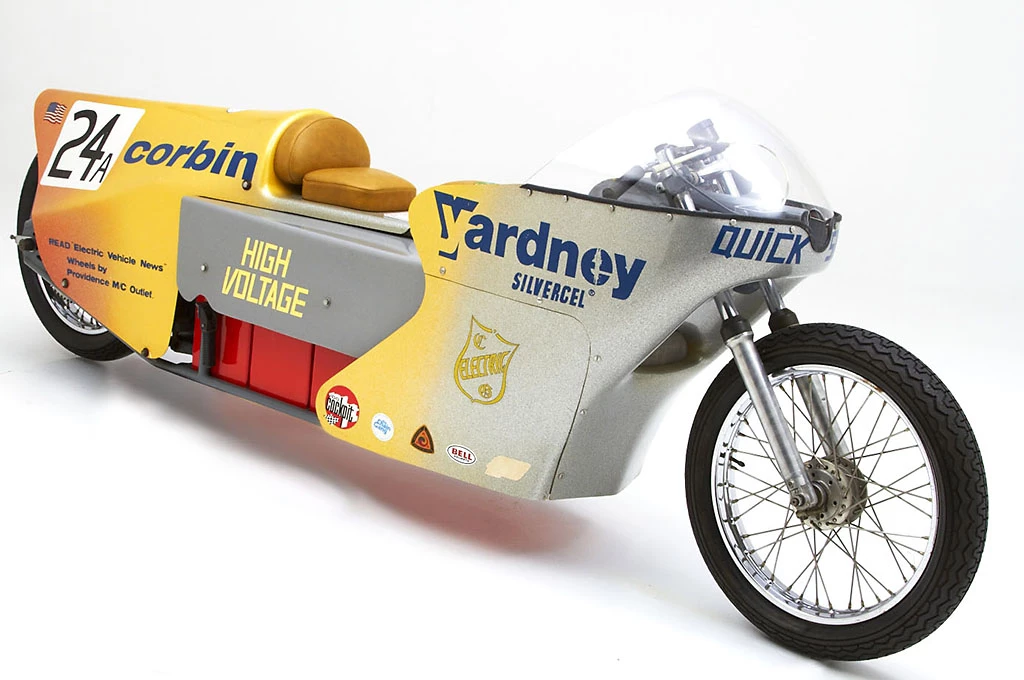
"Borrowing" battery silver from the US Navy
There was a great story about the batteries too. There was this guy, his name was Dr. Petrocelli, he was a naval engineer. He'd been a big shot in the Navy and he was the CEO out at Yardney Electric, who made those batteries for the nuclear subs.
I got along great with him, because I'd been an electrician in the Navy. So he says "well, it's $100,000 for the battery." And I said "well I don't have no hundred thousand dollars for a battery." He says "well, it's really worth it, because there's a hundred thousand dollars worth of silver in it." And I go "well yeah, I understand that, but I don't have a hundred thousand dollars for a battery. You're the sponsor, that's your problem."
So the Navy had a big vault in their building that was full of silver. The silver actually belonged to the US Navy. We took the silver out of the vault, and built the batteries for Quicksilver. We took it to Bonneville, Yardney sent an engineer and a marketing guy with me. We got the land speed record, we came home, we recycled the batteries, we put about 99 percent of the silver right back in the vault, and the Navy never knew it!
Hopefully enough time has gone by that they probably won't prosecute me and send me to Leavenworth! That's where all the military criminals go, you know…
But that's how it was in the 70s, that's what electric vehicles were all about. I was the first guy ever to ride a motorcycle with a battery other than a lead acid cell. I was the first guy ever to have an electric motorcycle that was registered with a license plate on it, that was in '72.
We didn't have the technology that you have today, but I used to be a flat tracker and a Jack Pine Rider, so I did a lot of riding.
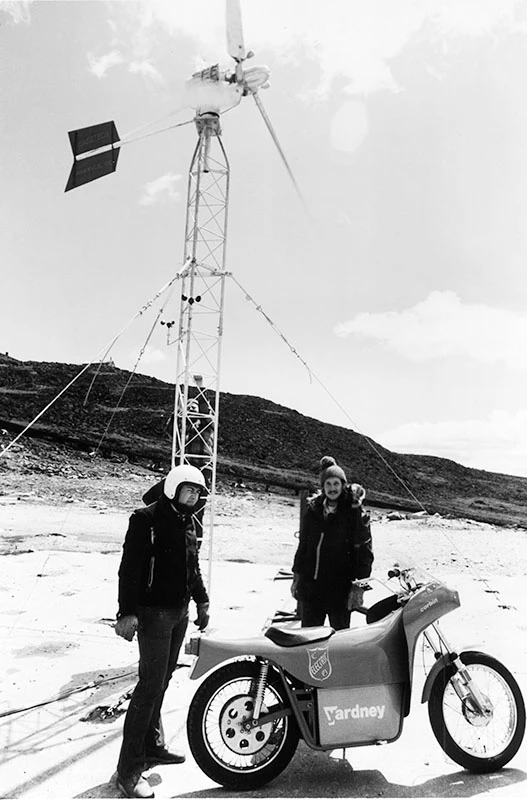
Charging Quicksilver: six jumper cables, a power pole and a pool full of idiots
So we need 220 volts AC for the battery charger. I get my wife on the phone with this little hotel in Wendover, Utah – that's near where Bonneville is. I says "OK, Jane, don't let the cat out of the bag. Call them up, make sure they have a washer and a dryer." And I'm visualizing that I'm gonna have 220 with 30 amps, at least.
She calls them up and they say "don't worry, we've got a full laundry." So I'm telling the Yardney guys "yeah, we're gonna charge the battery off their 220 volt dryer socket." But we get there and what have they got? A 110 volt dryer. Seriously, you couldn't dry two handkerchiefs in that thing. So now we've got no 220 plug.
Well, we needed 220 volts, and there's only one place we could get it! I'm looking up at the power pole… I used to work as an electrician, wiring houses out in Connecticut. So I knew exactly what I was looking at. But we didn't have any wire! I mean you can't go up there with a lamp wire, it's not big enough. But jumper cables…
So my mechanic has to drive to Salt Lake City, 100 miles, to buy five or six pairs of jumper cables. We link 'em all together.
And the hotel had this little funky office, with a little old lady in there, and the telephone pole was right in front of her office. So I told my guys – they had this little crummy fiberglass pool – I told my guys to go out there and start splashing around and throwing beer cans around and stuff so she's watching you while I'm climbing the pole.
So they do, and she's running out there, hands on hips, saying "we have other guests, you know!" And I climb the telephone pole, and I clamp the battery cables onto the 220 cable. And they're all laid all over the ground and we put 'em on the battery charger. I think it might only have been 205 volts, because the charger was groaning away…
But it did the job! Yeah, we had a lot of fun. And that's how we did the first motorcycle land speed record!
See Mike's work at Corbin Saddles. Thanks to "Electric" Terry Hershner and Dezso Molnar.
Stay tuned for part two of this interview, where Mike shows us his next great gamble in the electric vehicle business.






























